New York City — Sept 26, 2019
Wayan and Wulf’s Fish Bring International Dishes to NYC
A collaboration between New York City’s Wayan and Boston-based Wulf’s Fish helps Cedric and Ochi Vongerichten create dishes from memories of Indonesia and other far-off locales.
Words by Tse Wei Lim
Photography by Noah Fecks
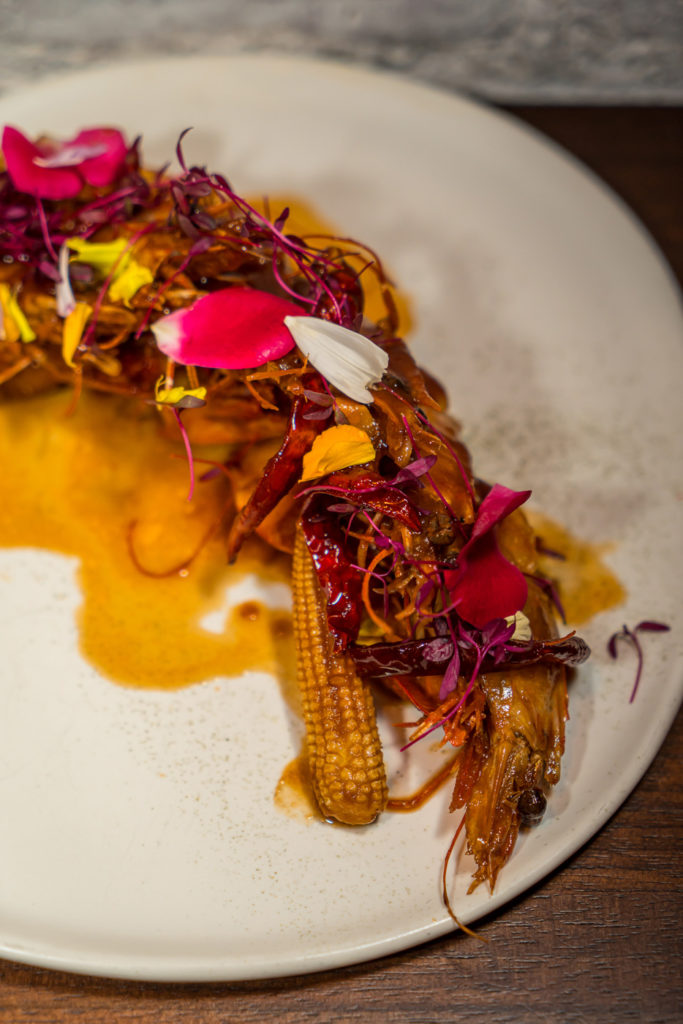
I am surprised to learn that Cedric and Ochi Vongerichten, the co-owners of Wayan, are first generation immigrants. Cedric’s father, Jean-Georges Vongerichten, is after all a titan of the American restaurant world, whose eponymous restaurant embodies all that is New York about New York’s high-end dining scene.
But Cedric was born in Bangkok, during a time in which his father was there working at the Oriental Hotel, and Ochi is Indonesian, born and raised in Jakarta. In an earlier era, they might have come to America through Ellis Island. Instead, Cedric and Ochi both landed in Hyde Park, New York, at the Culinary Institute of America, where they met. They came on student visas, fell in love, then found jobs and work visas after they graduated—Ochi working for Daniel Boulud, Cedric for the family empire as the sous chef at Jean-Georges and then chef de cuisine at Perry Street. They both received their green cards in 2016, more than a decade after they first came to the United States.
In this light, Wayan is a song of home. It is a story of Indonesia, a collection of the couple’s best and fondest memories, and a whirlwind tour of the places and dishes they remember most.
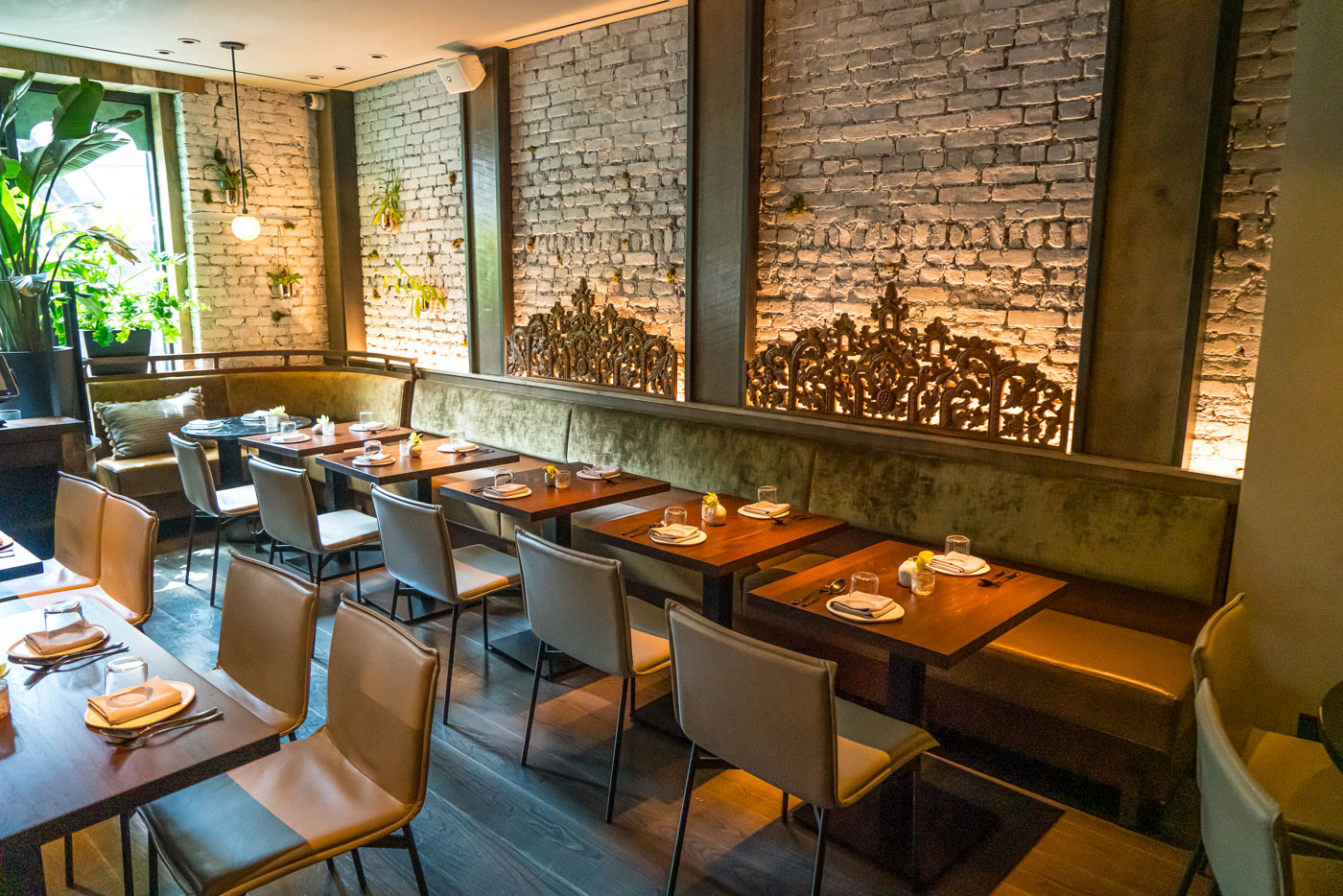
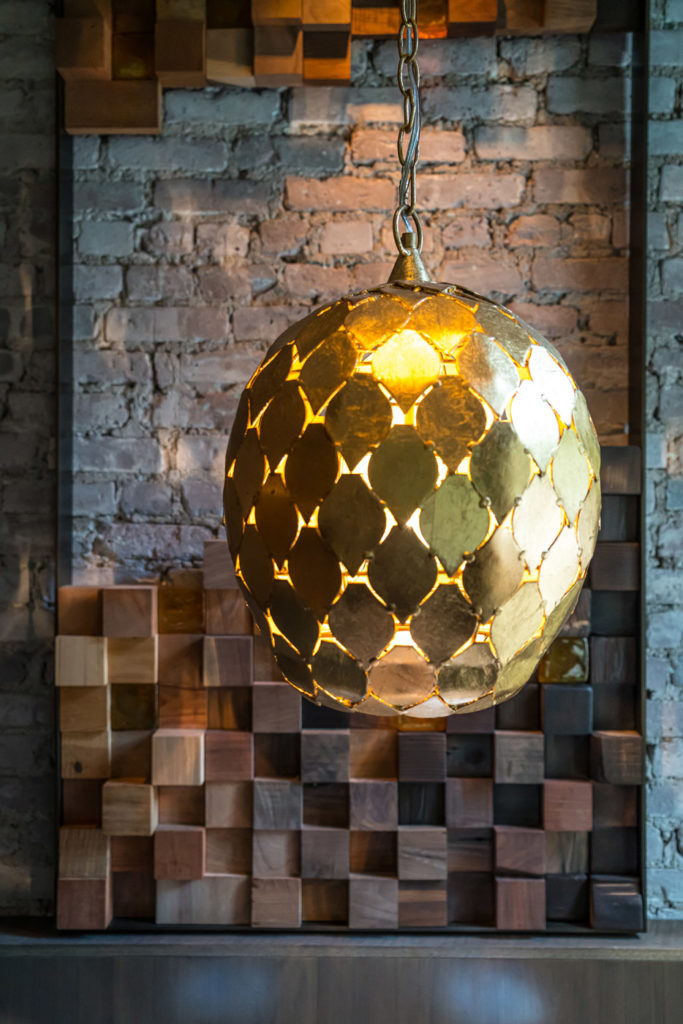
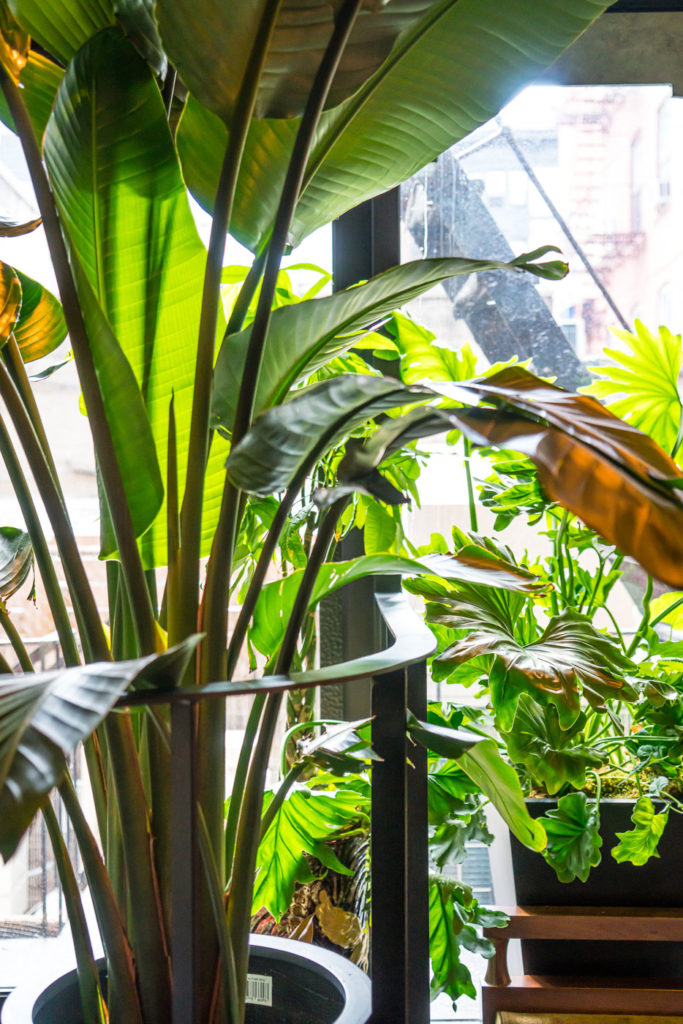
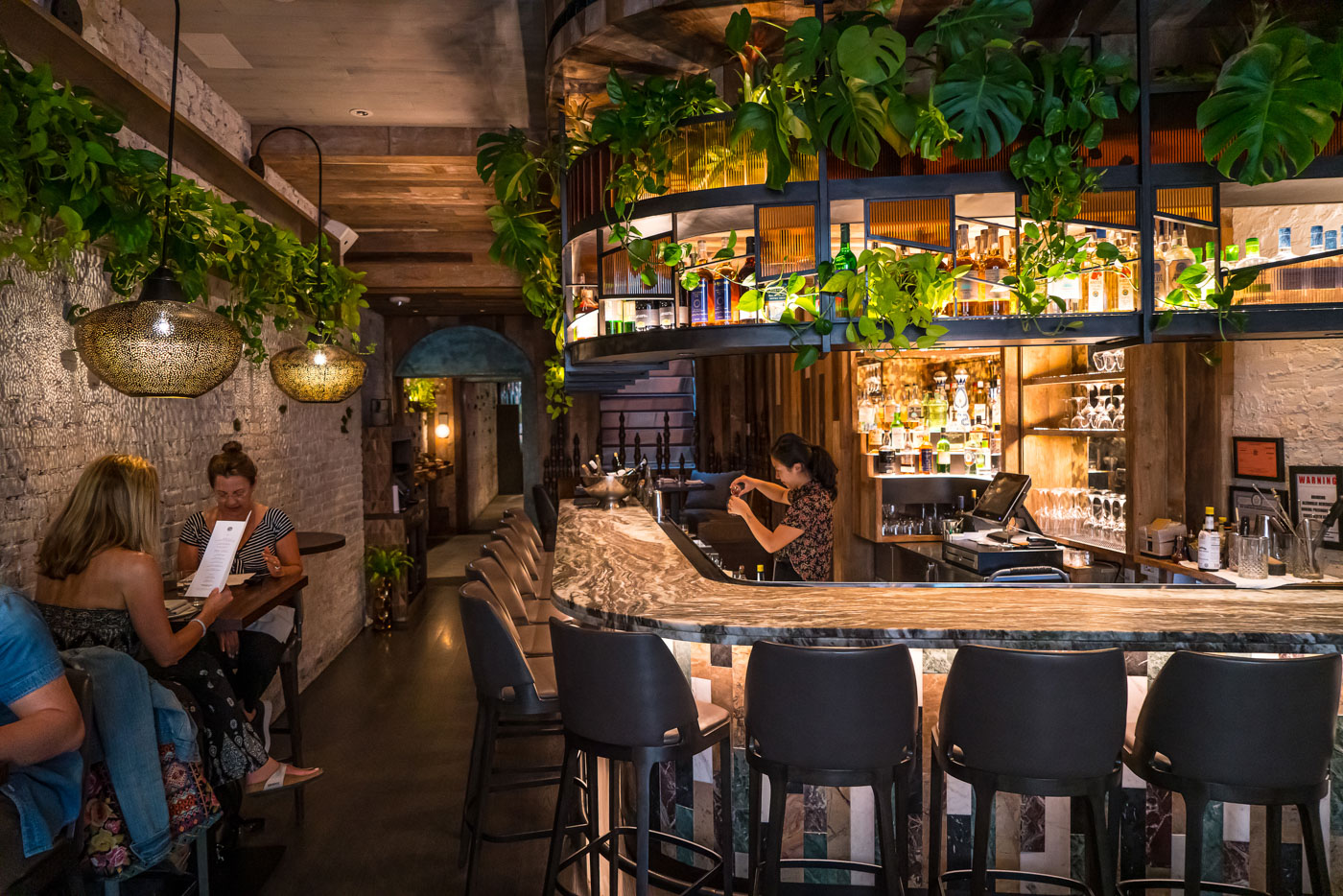
In truth, any Indonesian restaurant is a highlight reel. Indonesia sprawls across three million square miles. It has thousands of islands, at least a half dozen major culinary traditions, and countless regional specialties. It is impossible for a single establishment to capture this entire smorgasbord, especially one far from home where ingredients are hard to find and staff who understand the food harder still. In this sense Wayan’s impressionistic menu is entirely representative of immigrant cooking, an almost random collection of dishes for which the longing is particularly heartfelt.
The Akuna Cod Bilingdingo at Wayan is based on a recipe Ochi’s mother makes. The original dish is called ikan bilindango; ikan meaning fish. Like Ochi’s mother, the dish comes from Gorontalo on the island of Sulawesi.
Ochi lights up as she describes her mother’s cooking. “My mum would take a whole fish—she would always use ikan lolosi [a small snapper called a fusilier] or selar kuning [yellowstripe scad, a type of jack]—cut it in half from the back, not the belly, and then rub it with the spice paste, the bumbu,” she says.

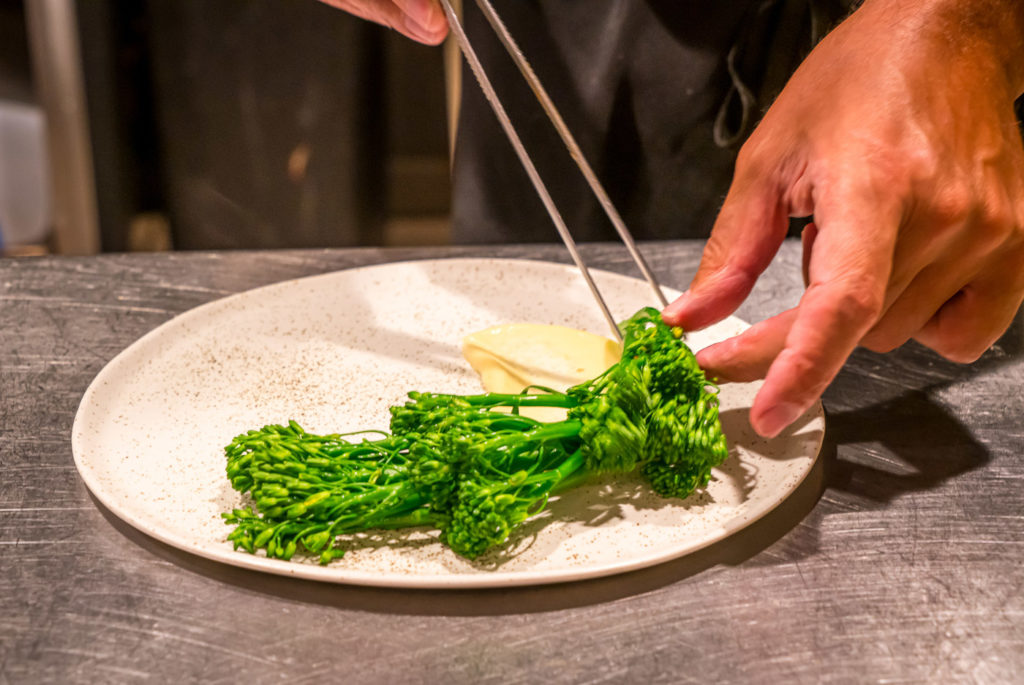
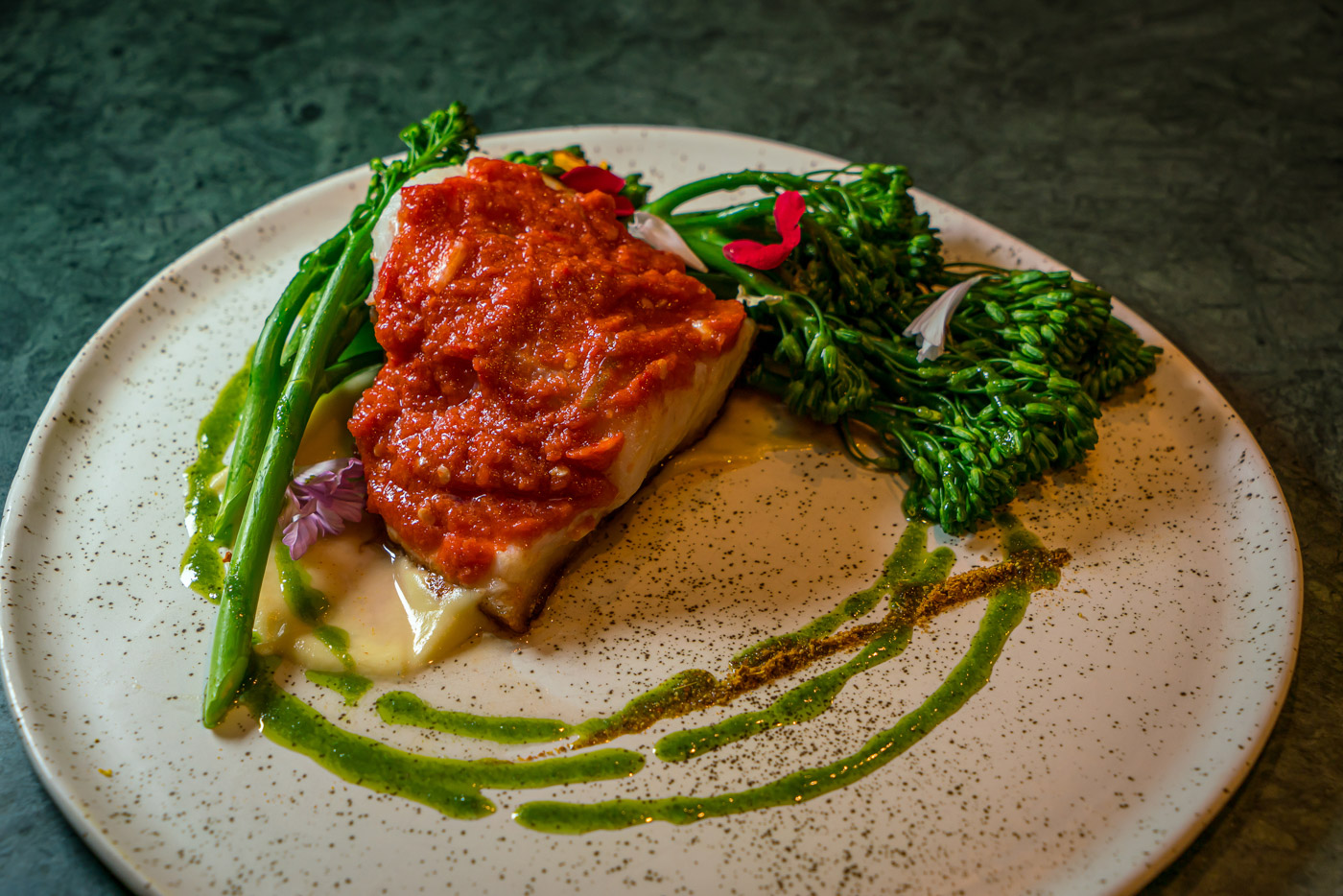
The exact composition of the bumbu varies from one cook to another, but the distinctive profile requires tomatoes and enough chili to give a lively heat. “My mum would wrap it in a banana leaf and then bake it in the oven, but we lived in the city, in Jakarta,” Ochi says. “In restaurants they often grill it, but they don’t turn it; they only cook it on one side, on the skin side, and then it’s even more amazing. You get the rich, sweet flesh, especially next to the bone, and the sauce is so good, so vibrant…”
The first time Cedric tasted ikan bilindango was actually in New York. “Ochi’s mum actually made it the night [we] got married,” he says. “The aroma was incredible.” At Wayan, Cedric notes, the level of heat in the bumbu is more in line with American sensibility. Indonesia’s cooking is filtered through the lens of his French technique.
Murray cod is not traditionally used to make ikan bilindango in Indonesia, but it is perfectly suited for the purpose—rich and sweet with a beautiful flake. It is actually a species of perch, although it is marketed as a type of cod. Its native habitat is the Murray River basin, just east of Adelaide, but the wild population has been significantly depleted by sport fishing. The gleaming pearl filets delivered to Wayan come from a sustainable aquaculture operation outside Sydney called Aquna, which raises Murray cod in ponds and ships whole fish all over the world.
Wayan’s access to Murray cod is the doing of Nate Alba, a New Englander tasked with finding Cedric analogues for all the Indonesian seafood of which he dreams. Alba is a representative for Wulf’s Fish, a wholesaler in Boston that ships New England’s catch all over the world and receives shipments from everywhere else in return. Without him, the bilindango might never have wound up on Wayan’s menu.
Their collaboration has helped yield a number of dishes. Sautéed whole shrimp wound up on the menu because Alba found a supplier of whole, head-on shrimp in Florida for Cedric. “They take such care with packing,” says Alba. “No one else can do whole shrimp to Cedric’s standards because the packing is so finicky.”
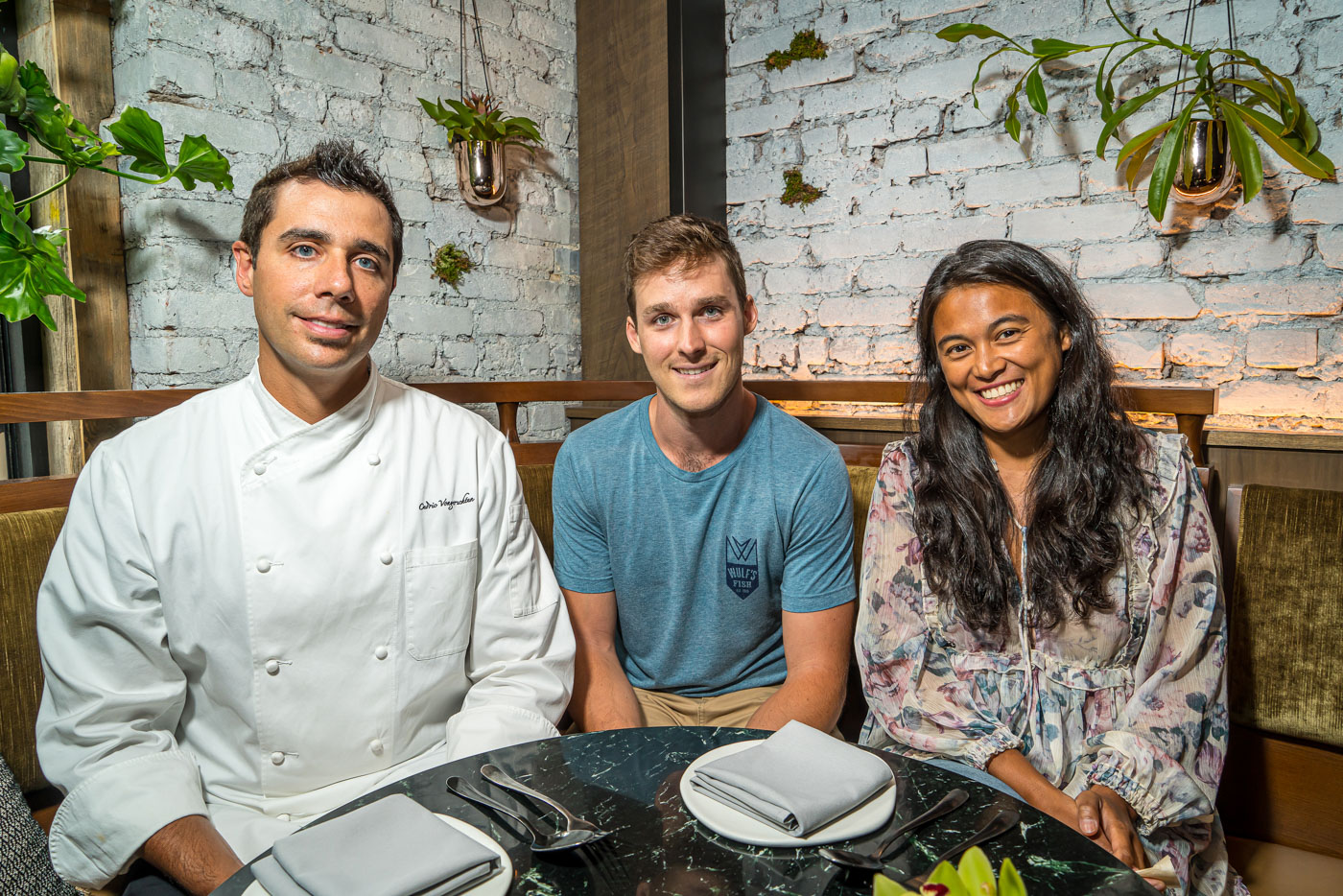
“He will text me late at night, early in the morning,” Cedric tells me. Ideas fly as they sit at the table. Razor clams, octopus in sos padang, Nantucket bay scallop sate—none of which are on the menu yet. Flavors Ochi misses and ingredients Alba believes in come together in Cedric’s imagination. The menu is partly Cedric cooking for Ochi, partly him cutting loose with ingredients too good to turn down.
The Murray cod that eventually winds up in Cedric’s hands is flown into Boston. It is delivered whole to Wulf’s warehouse, where it is filleted by the director of product quality—a Brazilian immigrant and cult Instagram star—Bala Paiva. Paiva has been cutting fish at Wulf’s for four years. When it comes to Wayan, the fish might be checked in by a Colombian, portioned by a Filipino, cooked by an Indian, and plated by a Korean (asparagus in spring, summer squash in August, now broccolini as summer turns to fall) before it makes its way to the pass. Cedric ticks off the nationalities of his staff on his fingers: Indonesian, Korean, Filipino, Indian, Ecuadorian, Colombian, French, American. Many of them are here temporarily, as working students or interns. Some, undoubtedly, will fall in love—with the city, with the country, with a person—and stay. Maybe they will open restaurants that remind them of home too.
Another dish made in collaboration between Wulf’s and Wayan is the Clams Jimbaran—another taste of Ochi’s childhood, a dish her family ate on vacation in Bali. Later, she and Cedric returned to Jimbaran, a stretch of beach with a particularly renowned cluster of seafood restaurants. “You walk in past tanks of live fish, and seafood piled on ice. They have everything,” Cedric says. “Prawns, giant, beautiful, heads on. Huge crabs. Fish from local waters, razor clams, piles of crayfish.” He describes a point-and-choose ordering system, and the experience of eating fresh seafood in the moment. “Then you find a table right on the beach. You sit down and take off your slippers and your feet are in the sand. They bring you a Bintang.” The clams are grilled, and the cook pries them open and slathers them with sauce, which caramelizes on the shells in the intense heat. Cedric and Ochi felt the dish might appeal to diners half a world away.

We are 10,125 miles away from Jimbaran, twenty-two hours and twenty-five minutes on the most direct flight available. They do not have a charcoal grill at Wayan. They do not have a beach or tables where you can sit with the sand between your toes. In SoHo, the clams are sauced and baked in a ripping hot oven until the sauce caramelizes and the clams cook through. Cedric’s kitchen contains a nine-foot Jade range and a commercial combination oven, but he sounds like a homesick Indonesian trying to figure out how to toast belacan in a New York apartment, or cook mi goreng without a wok. He reverse engineered the sauce from memory, guessing at the proportions used at their favorite place on the beach. Shallots, garlic, ginger, melted together slowly in a pan. Palm sugar, kecap manis, a bit of tomato, calamansi. Everyone on the beach uses the same ingredients; it’s the proportions that differ, and the cook’s technique.
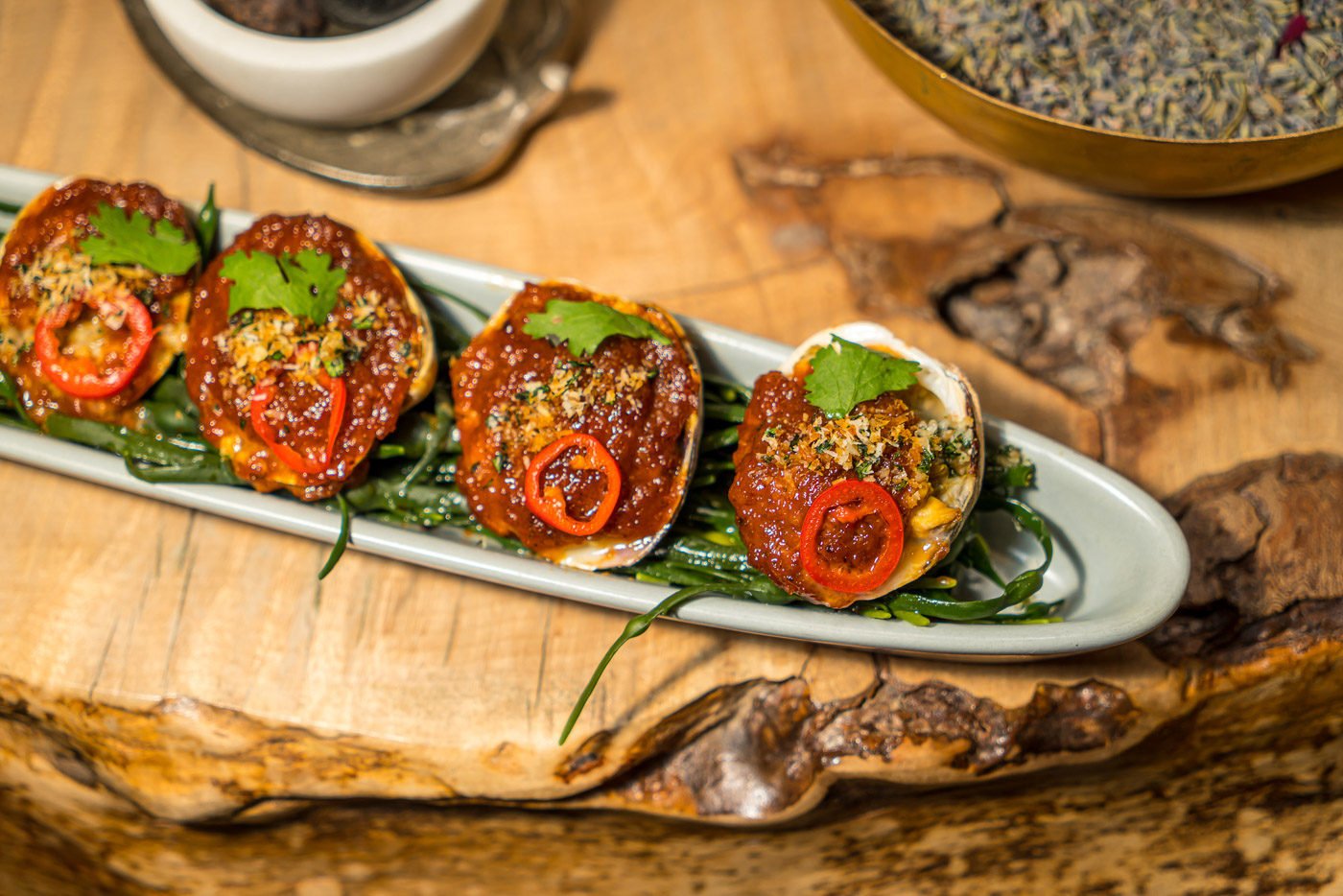
The clams come from Ipswich, a fishing community forty minutes north of Boston, founded by English immigrants in 1633. Like in Jimbaran, there is a beach. The clams are what Alba describes as soft-shell clams, and what are referred to by Northeast natives as “steamers”—smaller versions of the alien-looking critters swiped through butter by the millions every summer on Nantucket. They are raked by hand and shucked in Ipswich. Alba originally suggested them because he liked their supplier, an old shellfish company that processes with particular care—care he thought Cedric would appreciate. Cedric loves them for their texture, their full flavor, their ability to merge with the sauce and transport him and Ochi back to that beach in Bali.
In a sense, what Wayan aims to do is feed New Yorkers and have them feel like they have taken a trip to Indonesia. To make Ochi and Cedric feel like they can taste home. There is this awareness that there is nothing like this place in Indonesia, that Wayan could only exist because Ochi is far from home, and that this too is a beautiful thing.






Our comments section is for members only.
Join today to gain exclusive access.